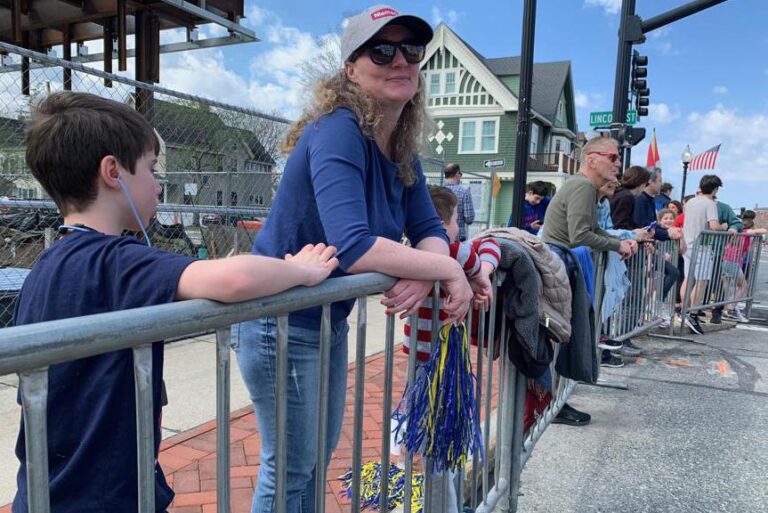Last year, Laura Amico and her family thought they had found the perfect quiet spot along the Boston Marathon course to watch runners while maintaining a comfortable environment for her 9-year-old son, who has autism. They brought headphones and sensory items, hoping they could stay long enough to see their friends run.
But despite being blocks away from speakers and large crowds cheering and ringing cowbells, Amico’s son was still overwhelmed.
“It didn’t bother me at all, but [my son] thought it was really, really too loud, and he had a hard time being there,’’ said Amico, who used to work for The Globe.
This year, Amico and her son will be watching the race from a designated sensory-friendly area along the course, the first in Marathon history. The section, at mile 13.5 in Wellesley, prohibits loud cheering and noisemakers such as cowbells and horns. It will also feature several spaces for spectators to retreat, should the race get too overwhelming, said Lorna Campbell, spokesperson for the Boston Athletic Association.
Campbell said the move builds on the Marathon’s work over the past several decades to make the race accessible to para athletes. The Marathon was the first of its kind to include a wheelchair division and offers a range of adaptive programs and divisions.
“This year is really the chance to turn that spotlight on the spectators and make sure we’re not just taking care of our participants and being inclusive there, but we want everyone coming,’’ Campbell said.
Amico was the one to inspire the BAA to create a designated area for people with sensory difficulties; she called the association with her experience and idea after the Marathon last year.
“While I was there, I was thinking it would be much easier to stay if the speakers were just a few blocks away and people didn’t have cowbells,’’ Amico said. “Those seemed like two really simple adjustments that would make the day so much easier for my family.’’
After that, BAA connected with the Flutie Foundation, a Waltham-based organization that aims to increase quality of life for people with autism. The organization has helped create sensory-friendly areas for past events and is the presenting sponsor of the Marathon’s adaptive program.
The BAA and the foundation found the perfect location for the sensory-friendly zone outside of Tolles Parsons Center, a senior citizens center in Wellesley. It is right along the course of the Marathon, and spectators will have the entire sidewalk, which runs along the center’s property, to watch from.
On Monday, the parking lot in front of the center will be empty, providing additional space for people to spread out and retreat from the race if they need to. In addition, the center will provide spectators with indoor access, including accessible bathrooms.
There won’t be a restriction on how much noise someone inside or outside the space can make, but the expectation is that people will be mindful of those around them, Campbell said.
“It’s going to be an opportunity for people to spectate the event without changing what the event is,’’ said Ethan Michaud, director of development for the Flutie Foundation. “It just changes how they are able to experience it and knowing that they have the space to go that allows them that flexibility.’’
The area will be staffed by Flutie Foundation and Boston Marathon volunteers. Michaud said the foundation will provide fidget toys, headphones, and ear plugs to.
“It’s not an activity zone, not a silent zone, just a place where it can be what it needs to be for people who are attending,’’ Michaud said. “People who benefit from these types of places want the opportunity to experience the event as it’s meant to be experienced.’’
Campbell said the BAA and the foundation will collect feedback from attendees and volunteers after the race, with the goal of improving the area and possibly expanding it to other spots along the course. The organizations are also accepting questions from interested individuals and families so they can plan ahead for their needs.
“We believe we’re one of the first mass participation outdoor events to have this kind of area, so it’s really exciting for us to see how it goes,’’ Campbell said.
Last year, Amico’s family left the Marathon early because of how overwhelming it was for her son, and they missed seeing friends run. This year, they will be watching from Wellesley.
“I’m just so thrilled that BAA took the idea and ran with it,’’ she said. “For me, to have the kids see people who have worked hard to be the best of the best and have an opportunity to see those people is something that I want them to be included in.’’
Emily Spatz can be reached at emily.spatz@globe.com. Follow her on X @emilymspatz.
